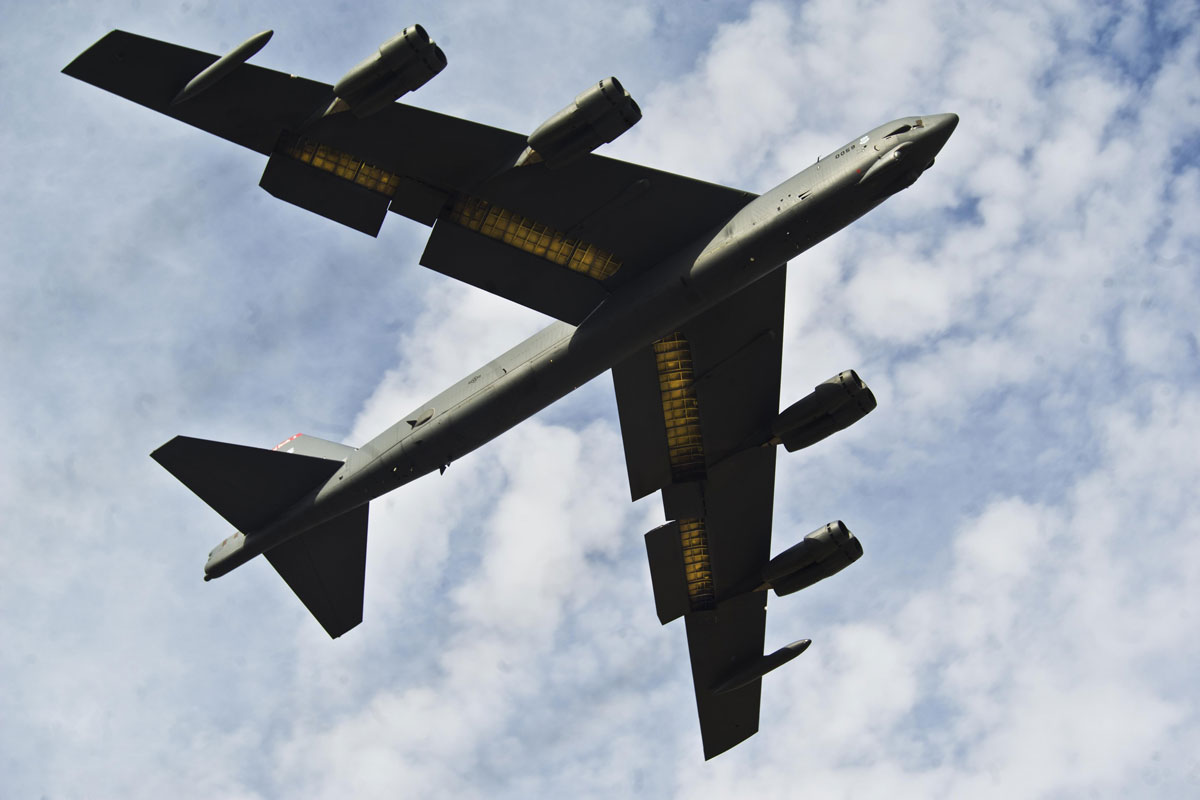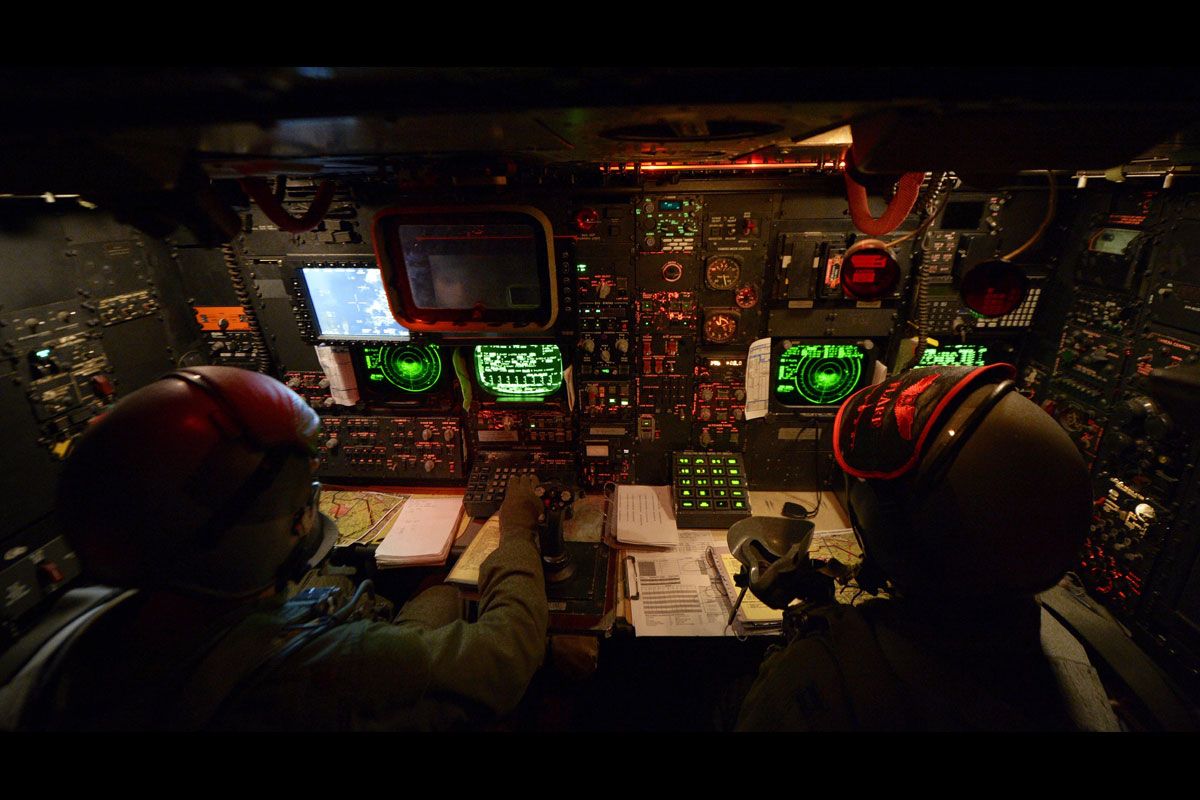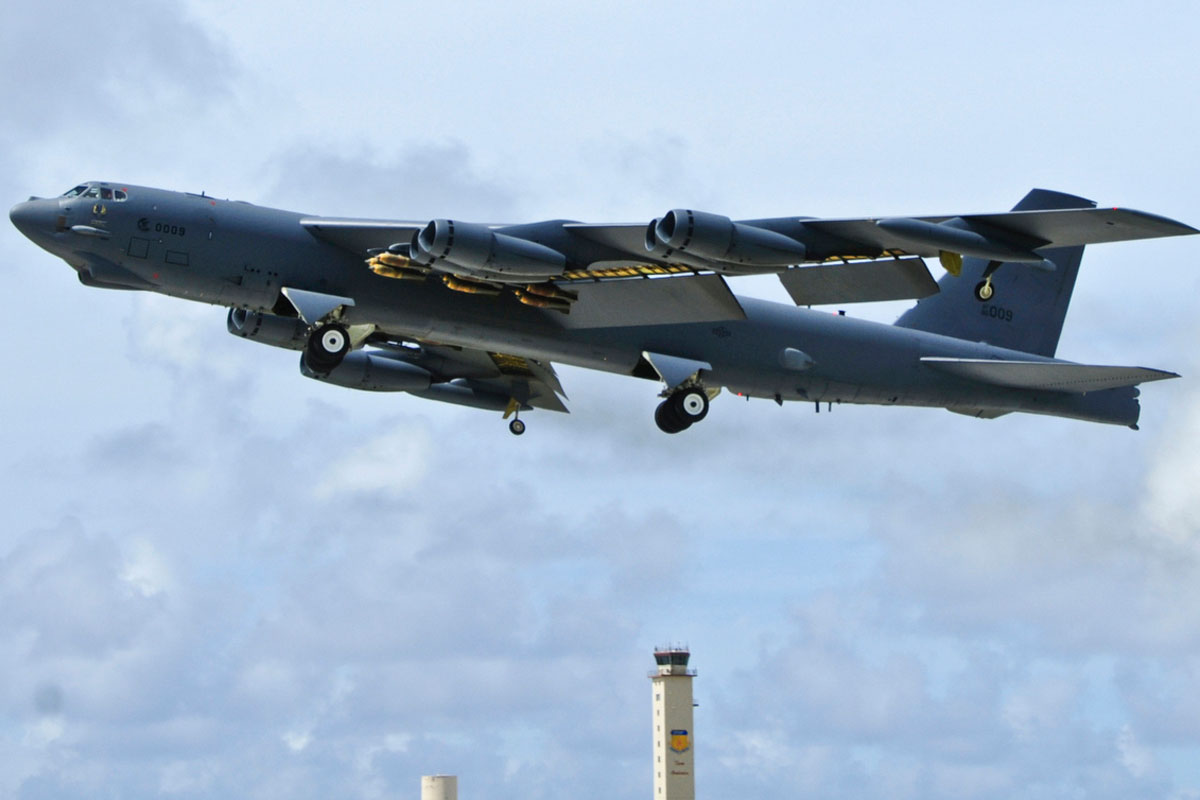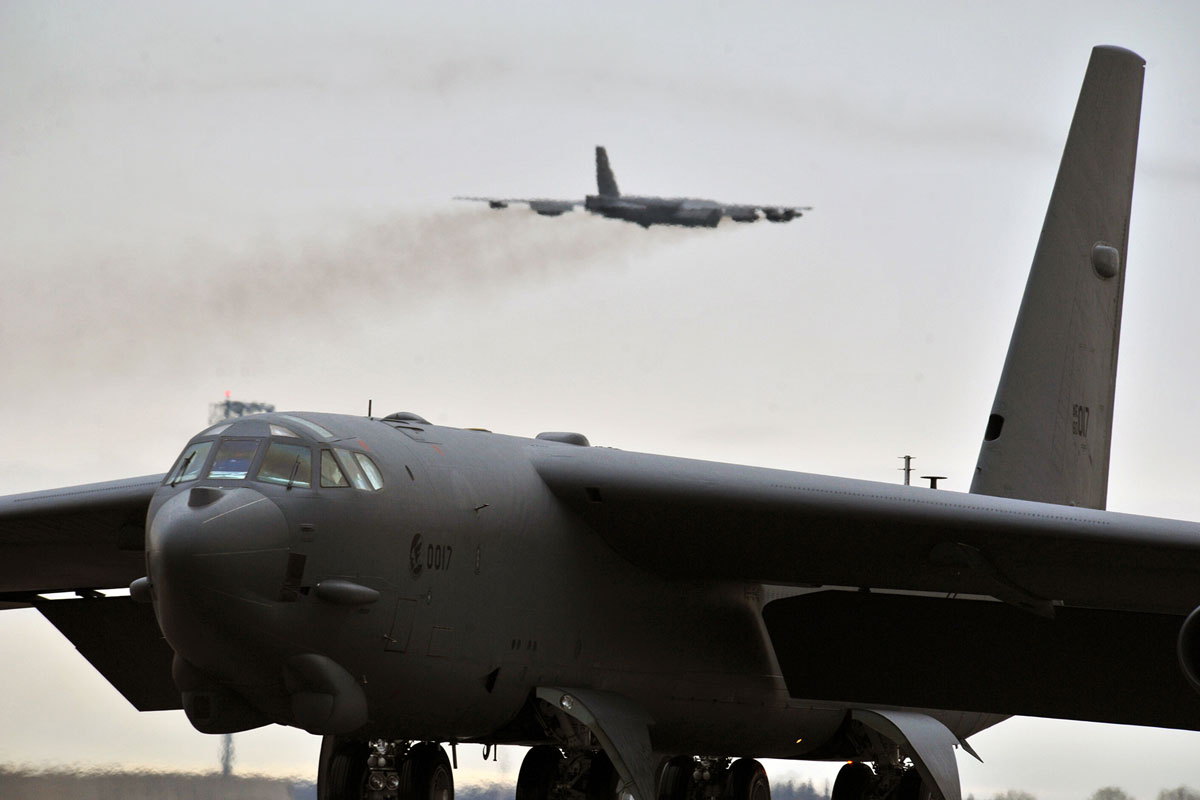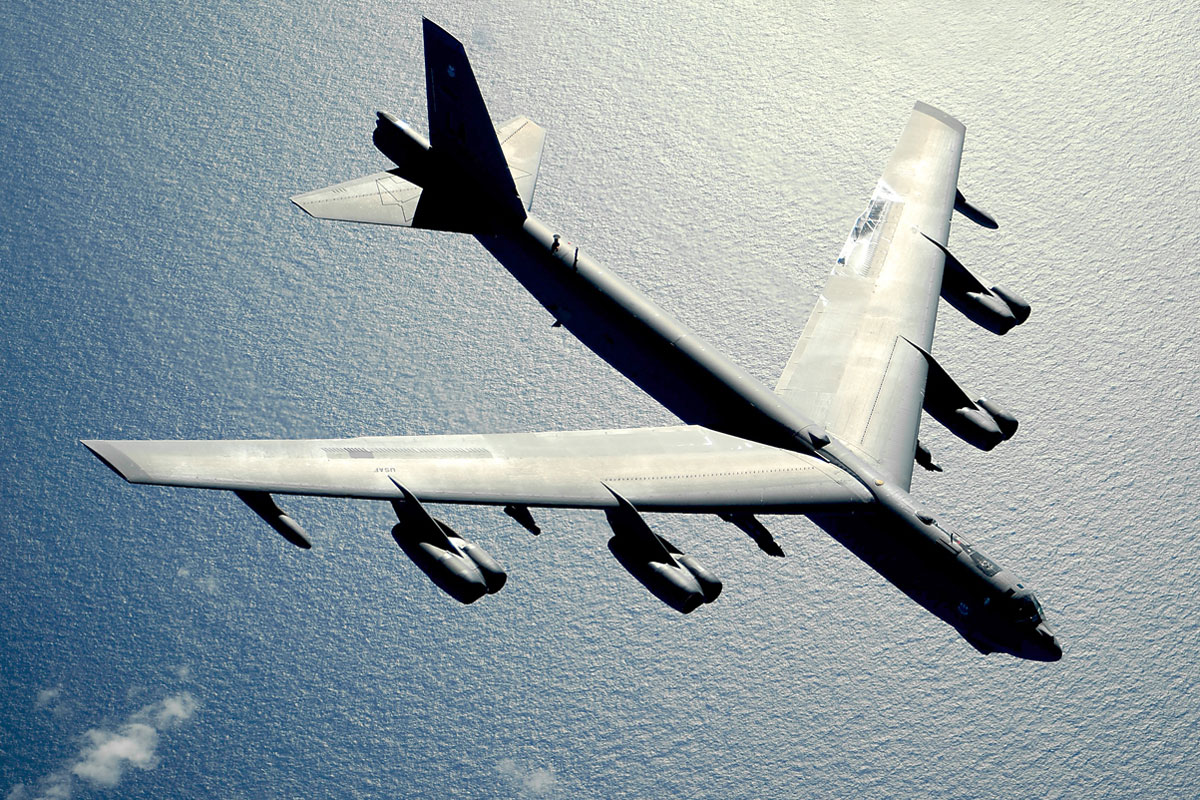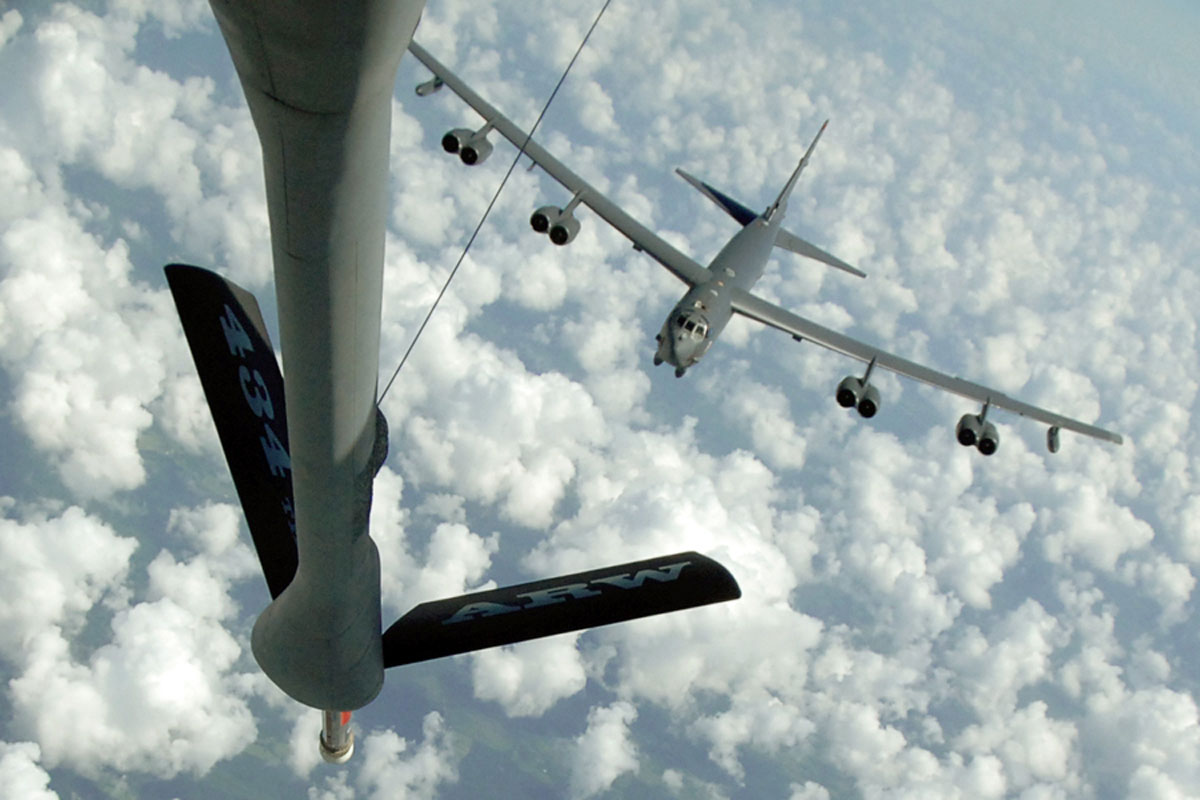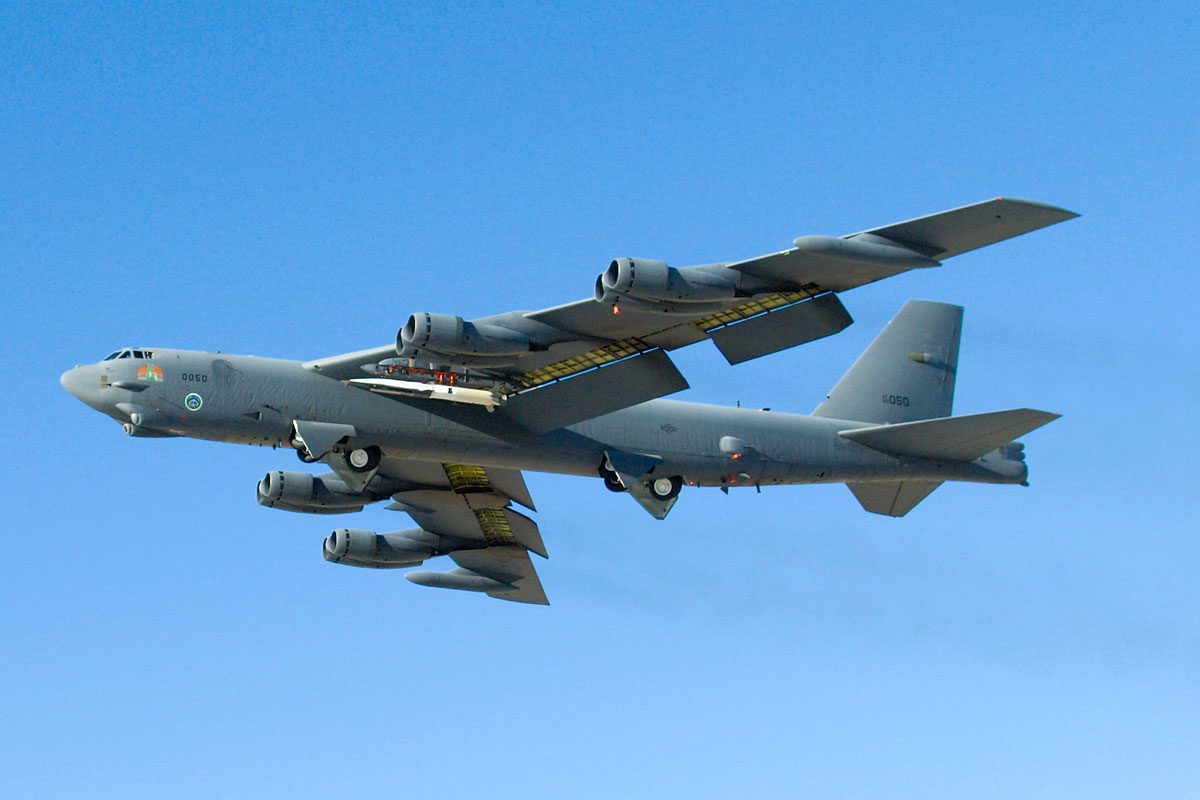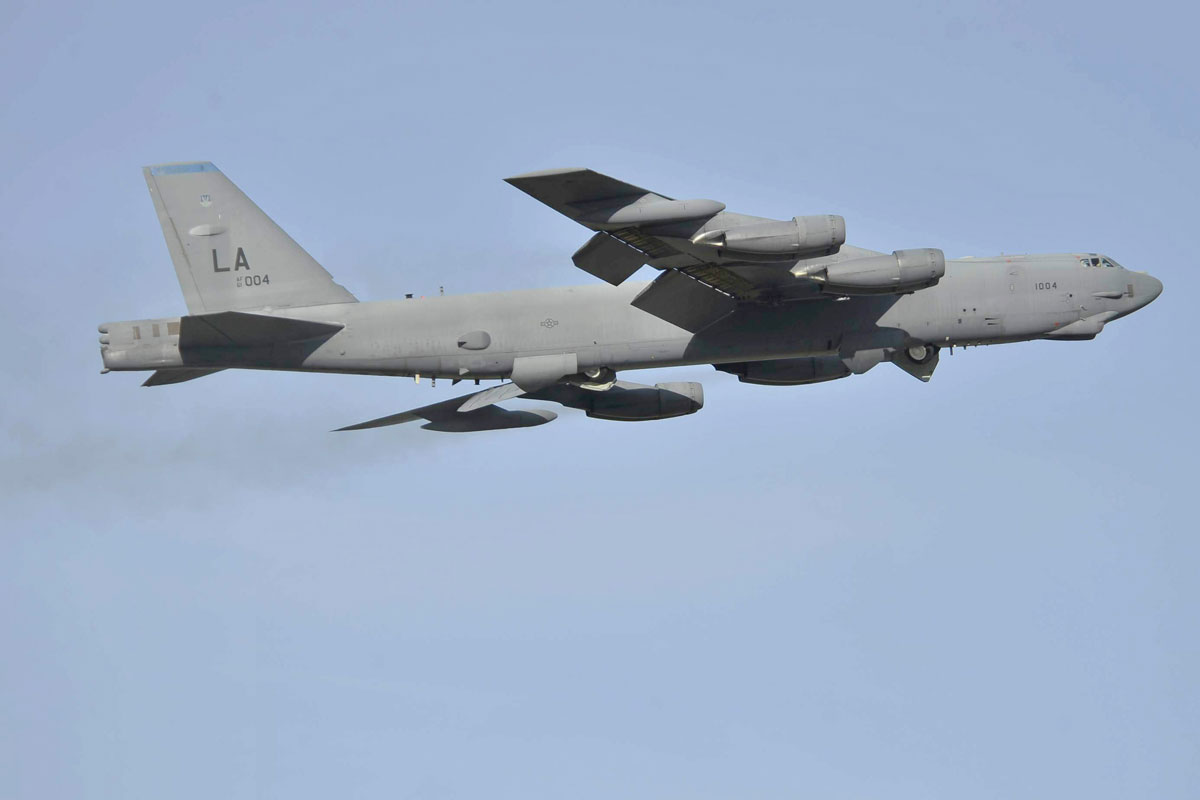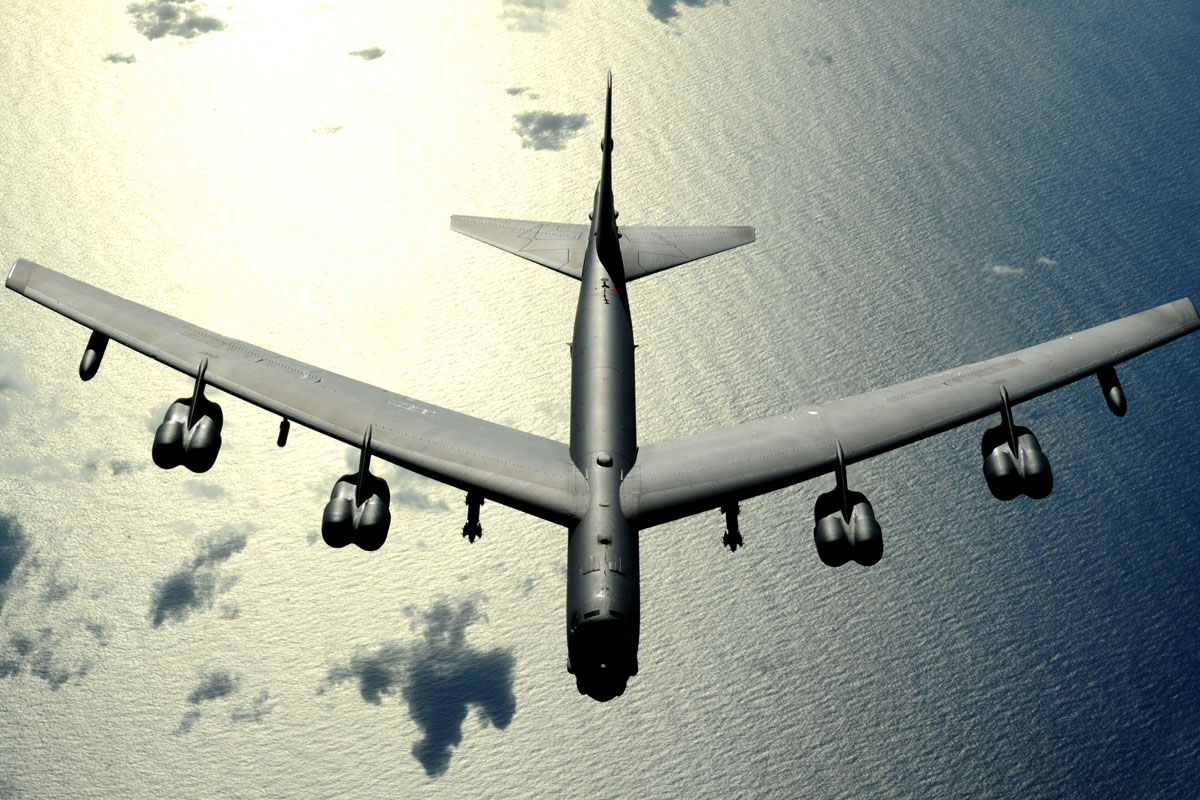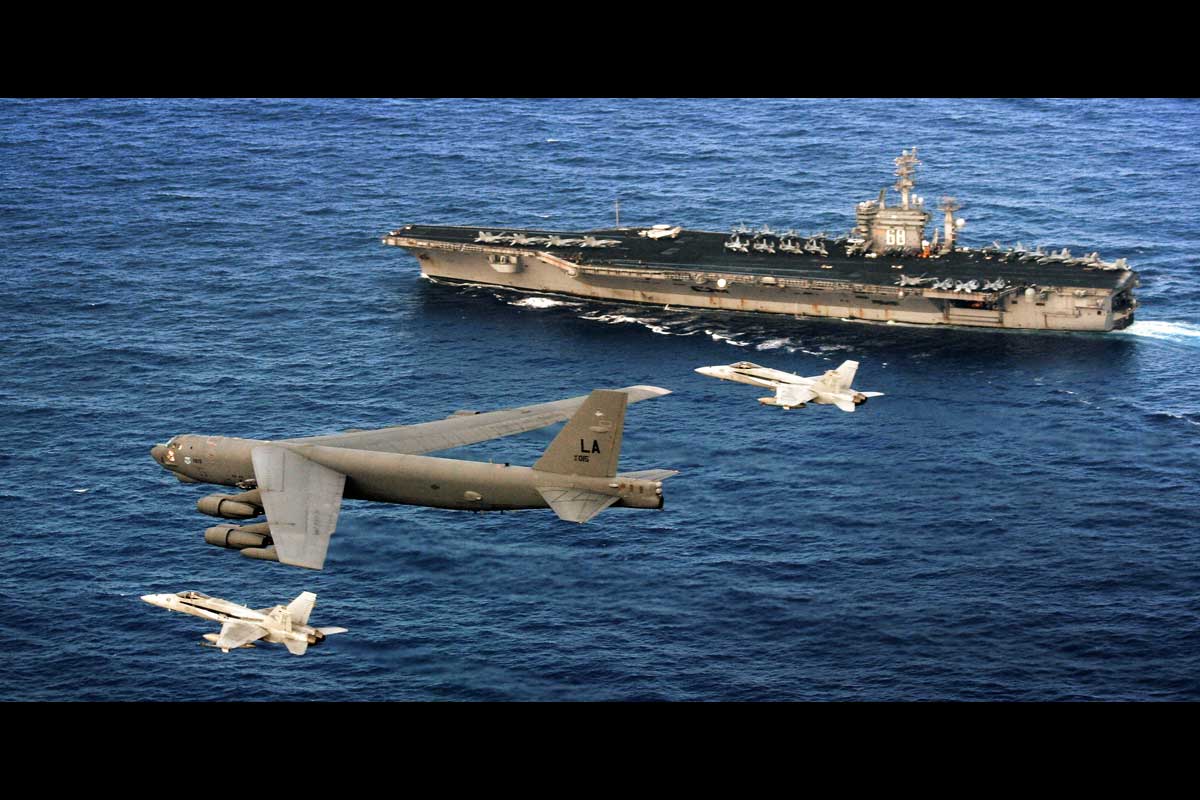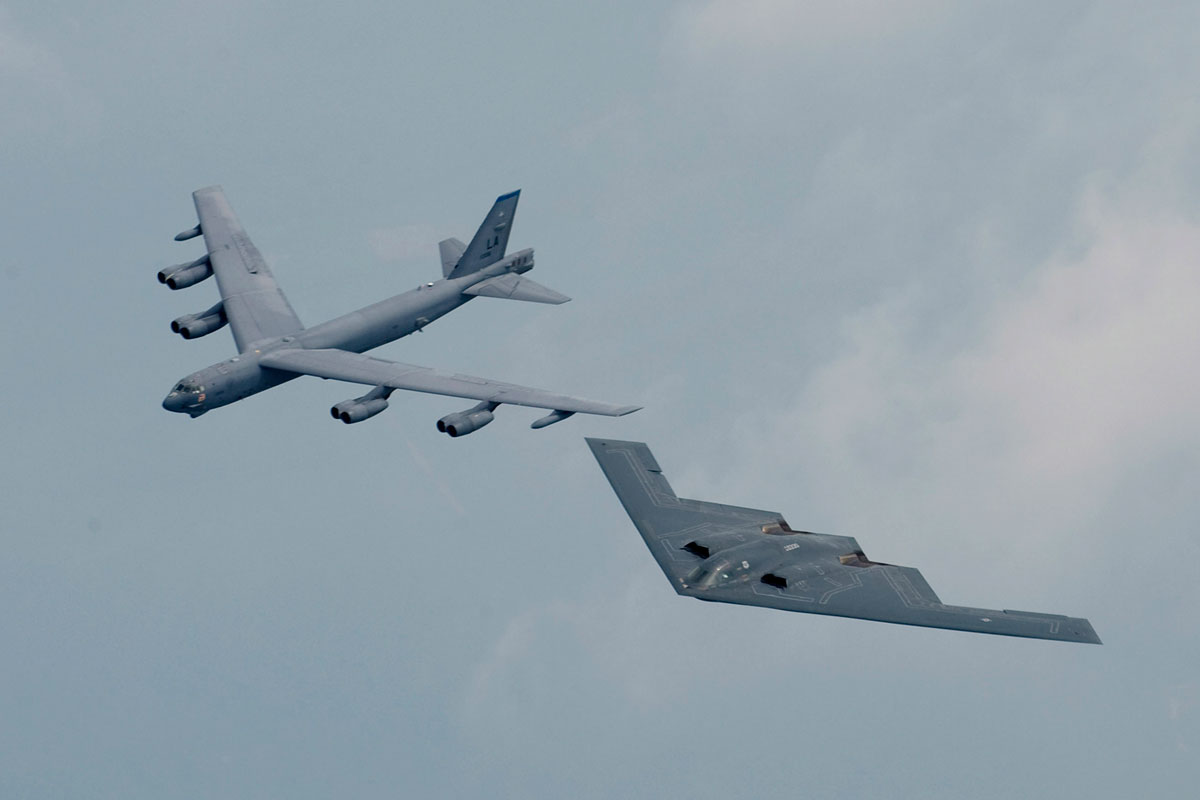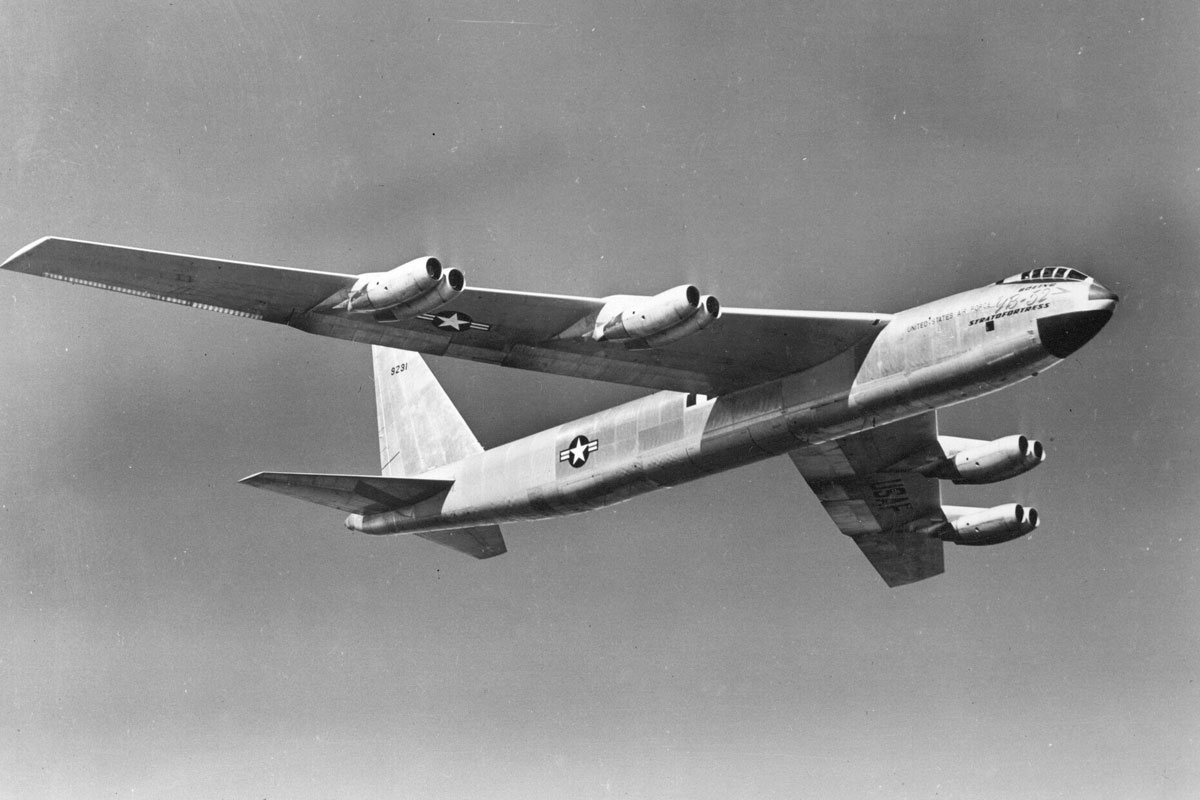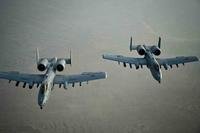Manufacturer: Boeing Military Airplane Co.
Power plant: Eight Pratt & Whitney engines TF33-P-3/103 turbofan Armament: Approximately 70,000 pounds mixed ordnance -- bombs, mines and missiles Speed: 650 mph Range: 8,800 miles Crew: Five (aircraft commander, pilot, radar navigator, navigator and electronic warfare officer)One of the most recognizable aircraft in the world and an icon of the United States’ Cold War deterrent, the B-52 Stratofortress was for decades the U.S. Air Force’s primary strategic nuclear bomber.
The bomber is capable of flying at high subsonic speeds at altitudes up to 50,000 feet (15,166.6 meters). It can carry nuclear or precision guided conventional ordnance with worldwide precision navigation capability.In a conventional conflict, the B-52 can perform strategic attack, close-air support, air interdiction, offensive counter-air and maritime operations. It is also effective when used for ocean surveillance, and can assist the U.S. Navy in anti-ship and mine-laying operations. Two B-52s, in two hours, can monitor 140,000 square miles (364,000 square kilometers) of ocean surface.
All B-52s can be equipped with two electro-optical viewing sensors, a forward-looking infrared and advanced targeting pods to augment targeting, battle assessment, and flight safety.
Pilots wear night vision goggles to enhance their vision during night operations. Night vision goggles provide greater safety during night operations by increasing the pilot's ability to visually clear terrain, avoid enemy radar and see other aircraft in a lights-out environment.
B-52s are currently upgrading from the Litening Advanced Targeting Pod to the Sniper Advanced Targeting Pod. Sniper pods provide improved long-range target detection/identification and continuous stabilized surveillance for all missions, including close air support of ground forces. The pod's advanced targeting and image processing technology significantly increases the combat effectiveness of the B-52 during day, night and under-the-weather conditions in the attack of ground targets with a variety of standoff weapons (i.e., laser-guided bombs, conventional bombs and GPS-guided weapons).
The use of aerial refueling gives the B-52 a range limited only by crew endurance. It has an unrefueled combat range in excess of 8,800 miles (14,080 kilometers).
For more than 40 years B-52 Stratofortresses have been the backbone of the manned strategic bomber force for the United States. The B-52 is capable of dropping or launching the widest array of weapons in the U.S. inventory. This includes gravity bombs, cluster bombs, precision guided missiles and joint direct attack munitions. Updated with modern technology the B-52 will be capable of delivering the full complement of joint developed weapons and will continue into the 21st century as an important element of our nation's defenses. Current engineering analyses show the B-52's life span to extend beyond the year 2040.
The B-52A first flew in 1954, and the B model entered service in 1955. A total of 744 B-52s were built with the last, a B-52H, delivered in October 1962. The first of 102 B-52H's was delivered to Strategic Air Command in May 1961. The H model can carry up to 20 air launched cruise missiles. In addition, it can carry the conventional cruise missile that was launched in several contingencies during the 1990s, starting with Operation Desert Storm and culminating with Operation Iraqi Freedom.
The aircraft's flexibility was evident in Operation Desert Storm and again during Operations Allied Force. B-52s struck wide-area troop concentrations, fixed installations and bunkers, and decimated the morale of Iraq's Republican Guard. On Sept. 2 to 3, 1996, two B-52H's struck Baghdad power stations and communications facilities with 13 AGM-86C conventional air launched cruise missiles, or CALCMs, as part of Operation Desert Strike. This mission was the longest distance flown for a combat mission involving a 34-hour, 16,000 statute mile round trip from Barksdale Air Force Base, La.
In 2001, the B-52 contributed to the success in Operation Enduring Freedom, providing the ability to loiter high above the battlefield and provide close air support through the use of precision guided munitions.
The B-52 also played a role in Operation Iraqi Freedom. On March 21, 2003, B-52Hs launched approximately 100 CALCMs during a night mission.
Only the H model is still in the Air Force inventory and is assigned to the 5th Bomb Wing at Minot AFB, N.D. and the 2nd Bomb Wing at Barksdale AFB, La., which fall under Air Force Global Strike Command. The aircraft is also assigned to the Air Force Reserve Command's 307th Bomb Wing at Barksdale.
